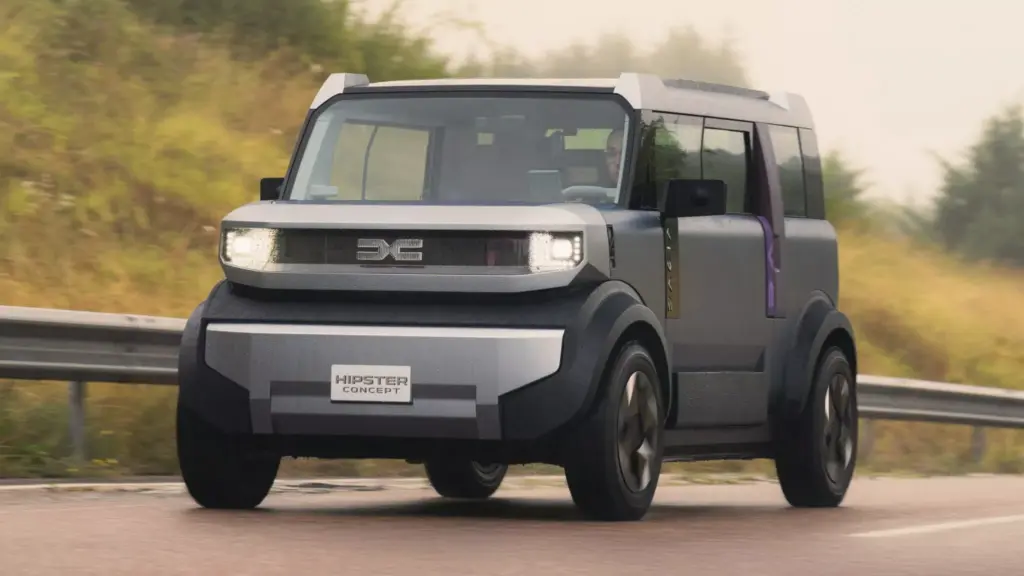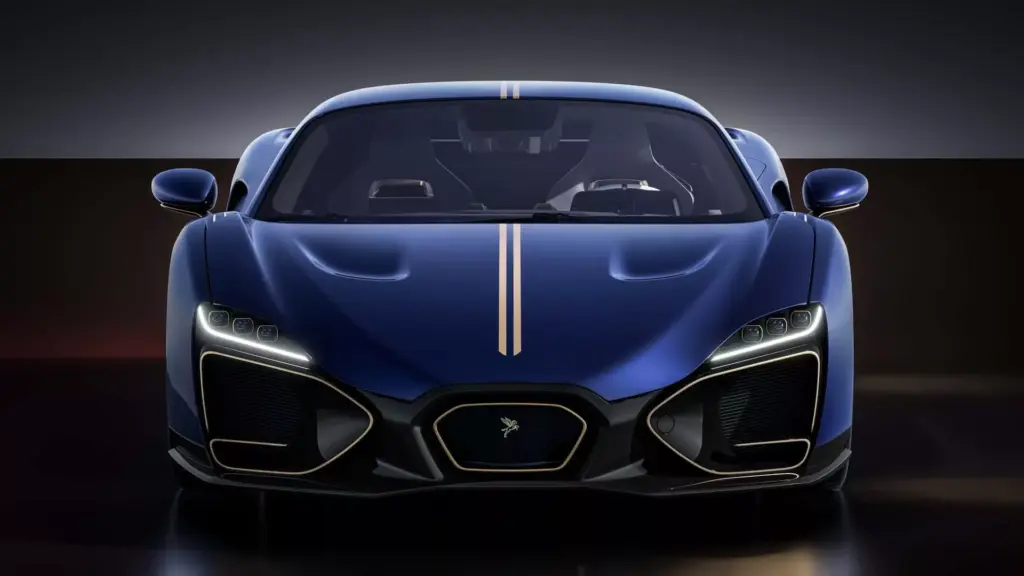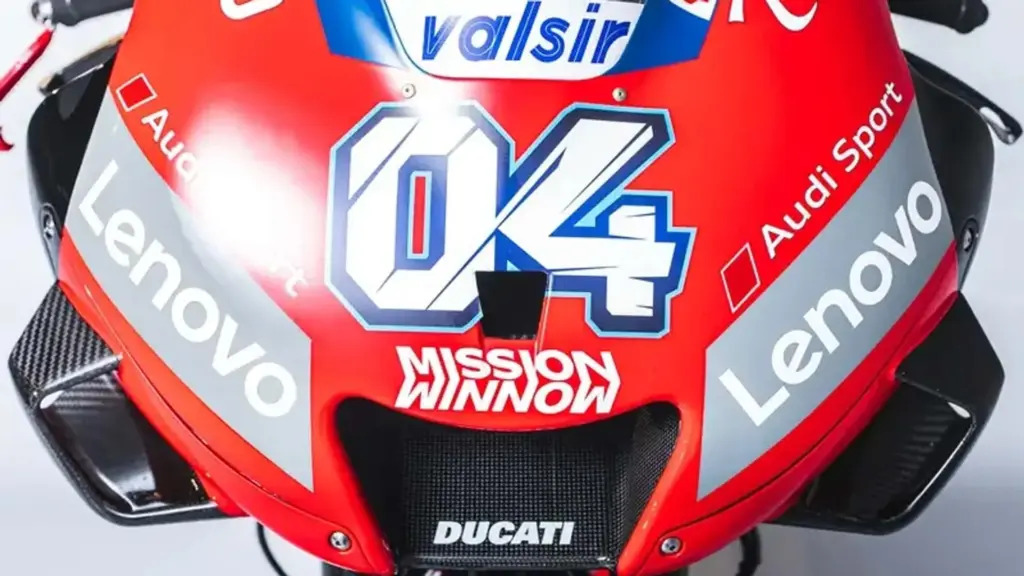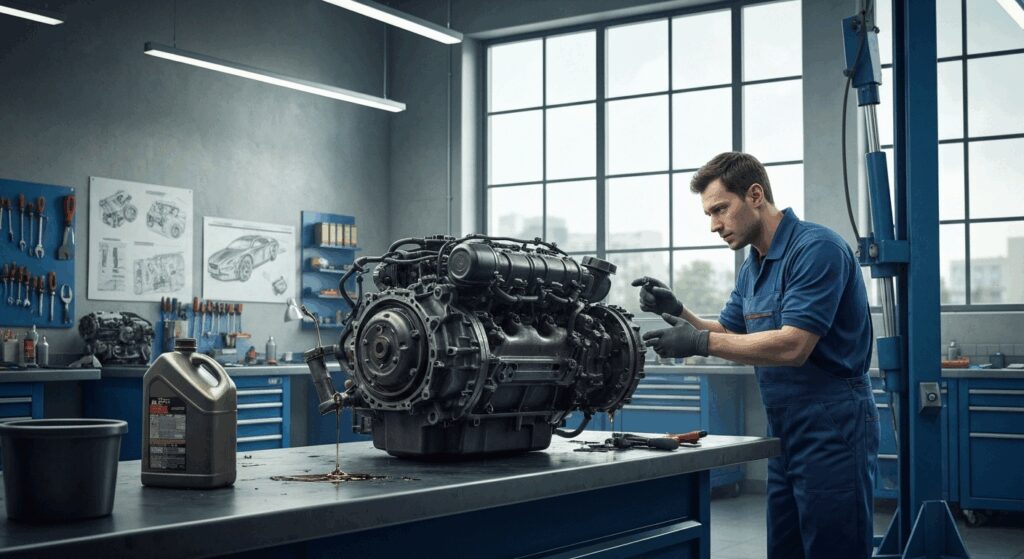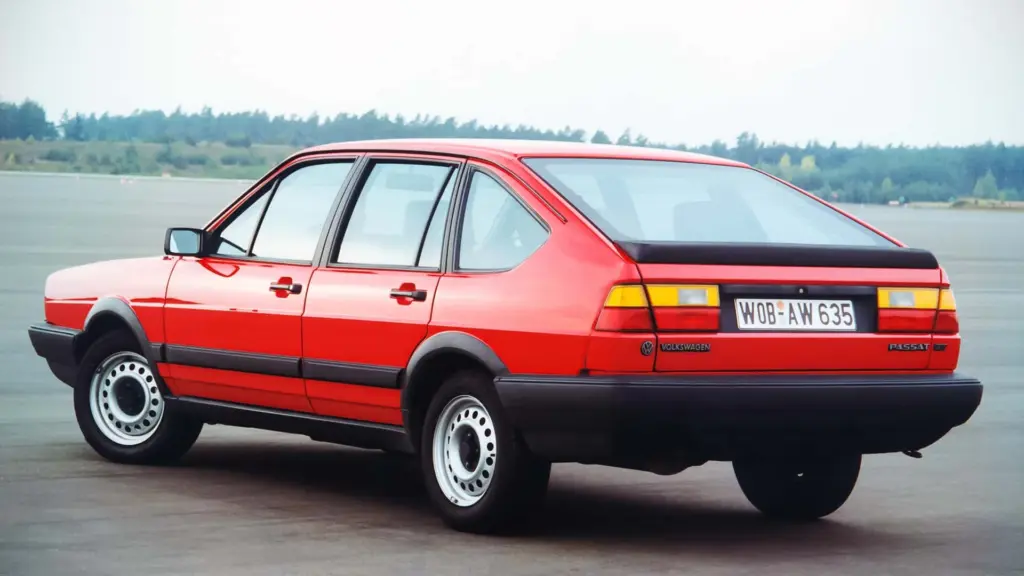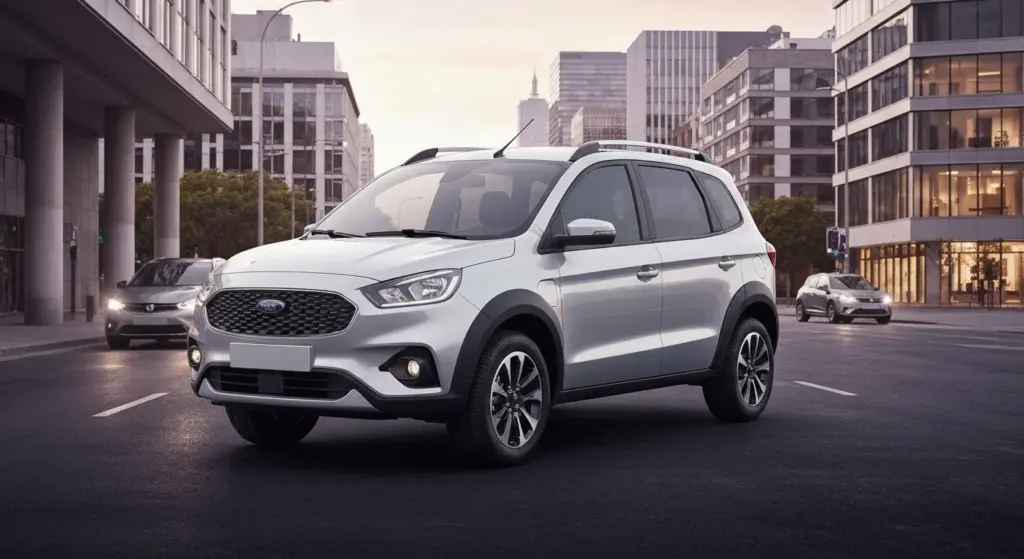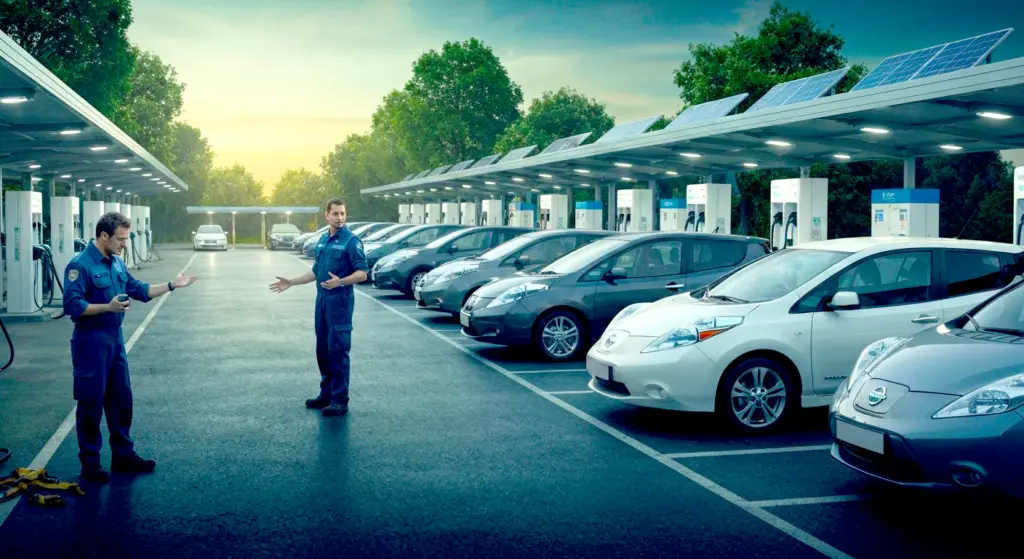The 2026 Toyota Grand Highlander aims to win in the segment’s biggest pain points: real space for seven or eight passengers and flexible powertrain options. It’s a well-calculated carryover from the 2025 model, with a $500 price increase, maintaining the package already approved by the market.
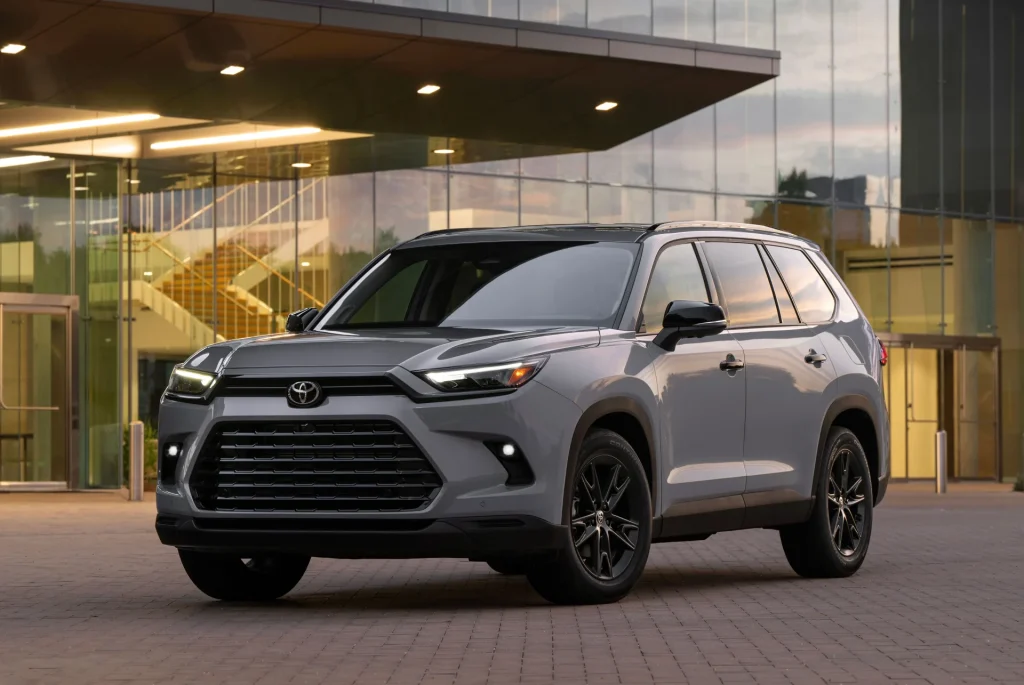
What Really Changes in the 2026 Grand Highlander?
Practically nothing in design, mechanics, or features — and that’s a good thing. The TNGA-K platform continues to ensure solid, efficient driving, while the extended body delivers a third row that adults can accept without fuss.
The price adjustment (+$500 across the lineup) indicates confidence in the product. For bargain hunters, it’s worth searching for equivalent 2025 units for less, as they are functionally identical and may show stock discounts.
Which Versions and Prices Make the Most Sense for Your Use?
The lineup is straightforward: LE, XLE, Limited, Platinum, and the Nightshade (style). The starting price is $42,855 (2.4T FWD). The equipment ladder naturally pushes toward XLE and Limited, where most expected features are found (heated seats, SofTex/leather, JBL sound, 12.3″ digital dashboard).
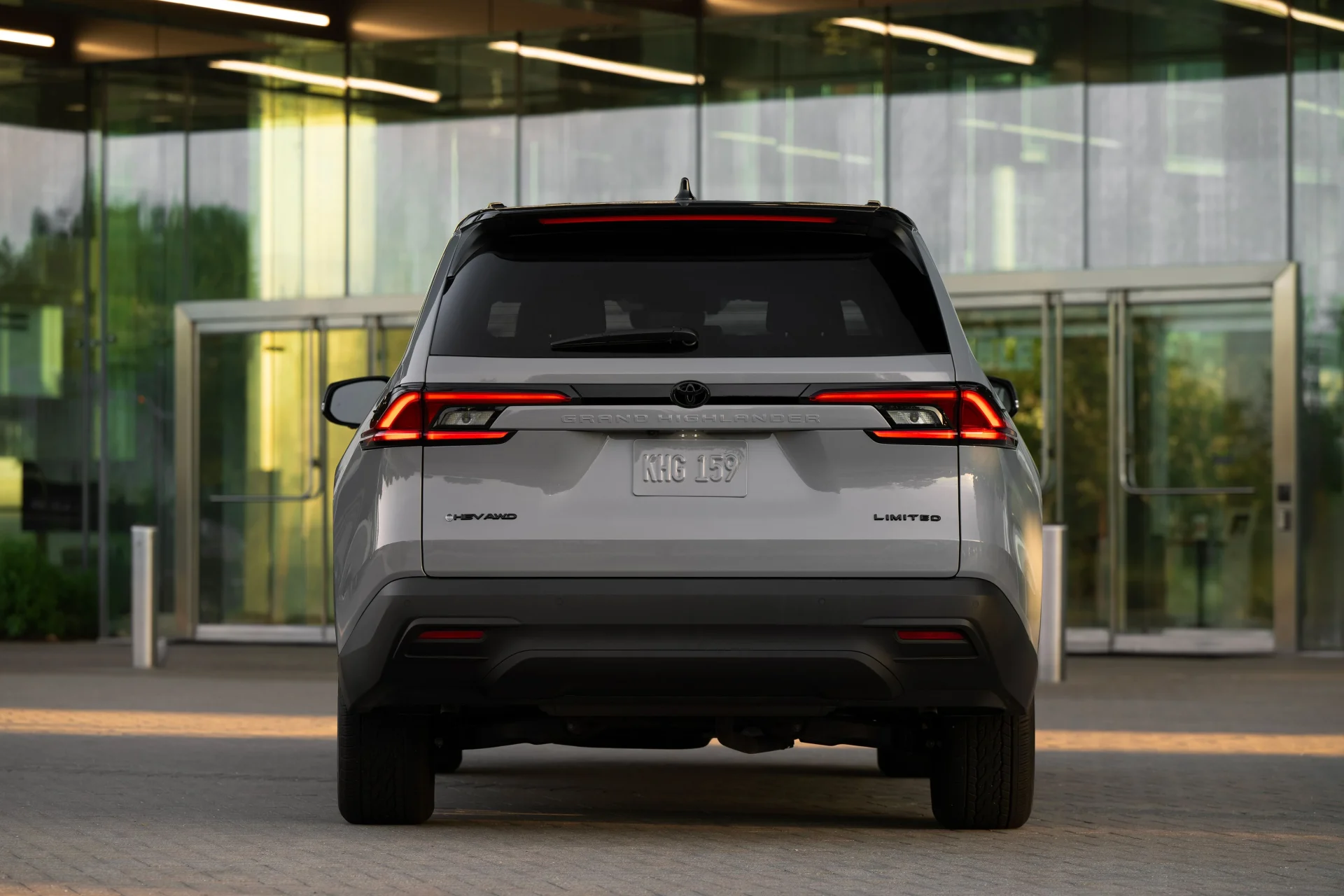
The Hybrid MAX (362 hp) is available through Limited and Platinum, intentionally tied to premium packages. If you want the “best engine,” embrace the luxury that comes with it. To understand what was already strong in the previous model, check out the analysis of the Grand Highlander 2025 (LE and Nightshade).
Do the Powertrains Deliver the Right Mix of Efficiency and Power?
2.4 Turbo Gasoline (265 hp, 310 lb-ft): 8-speed automatic, FWD or AWD. Accelerates from 0-60 mph in about 7–8 seconds and can tow up to 5,000 lbs (2,268 kg). Offers daily robustness and costs less, but isn’t exciting at high speeds when loaded.
2.5 Hybrid (245 total hp): eCVT, FWD or AWD on demand. Goes from 0-60 mph in about 8 seconds, operates in EV mode up to approximately 20 mph, and leads in fuel economy (up to an estimated 36 mpg combined in FWD). Towing capacity drops to 3,500 lbs (1,588 kg).
2.4 Turbo Hybrid MAX (362 hp, 400 lb-ft): 6-speed automatic with rear eAxle and full-time electronic AWD. Goes from 0-60 mph in 6.3 seconds and maintains 5,000 lbs of towing. It’s the “performance family” segment needed—without the fuel consumption of a traditional V6.
What Is the Internal Space and Cargo Capacity Really Like?
External dimensions: 201.4 inches (5,116 mm) long, 78.3 inches (1,989 mm) wide, and 116.1 inches (2,950 mm) wheelbase. The long platform delivers what matters: real comfort across all rows.
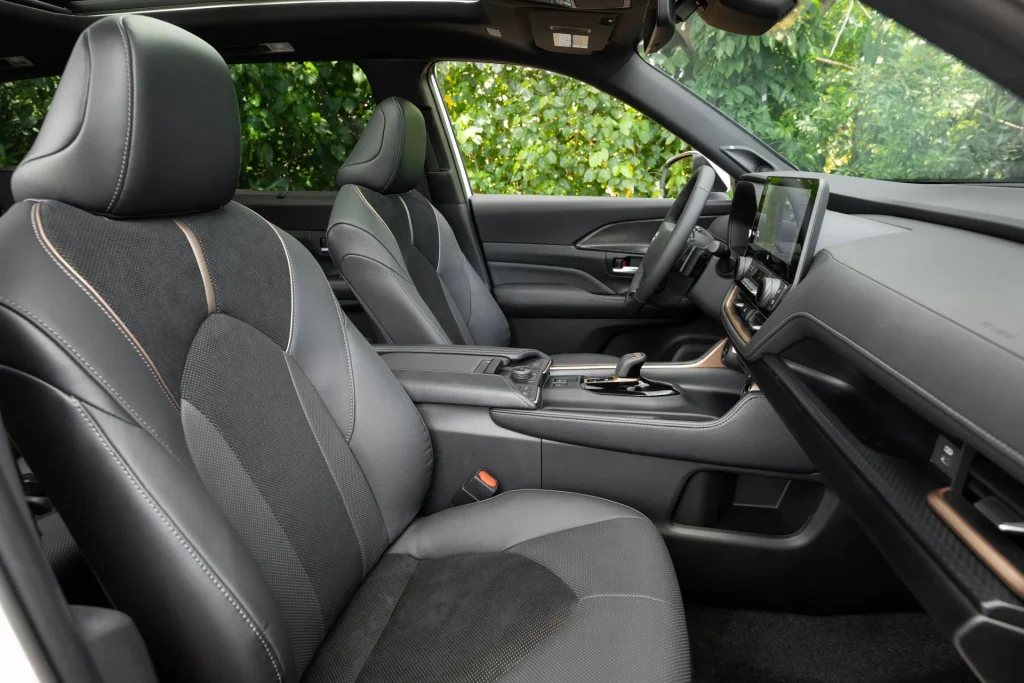
Third row with about 33.5 inches (85 cm) of legroom: adults can fit comfortably. Cargo space? 20.6–21 cubic feet behind the 3rd row; 57.9–58 cubic feet behind the 2nd; up to 97.5–98 cubic feet at maximum. It’s nearly minivan-sized, surpassing many three-row rivals in total volume.
Is Safety and Technology at the Level Family Demands?
The Toyota Safety Sense 3.0 package is standard and includes: pre-collision with pedestrian detection, adaptive cruise control with stop-and-go, lane centering assist, traffic sign reading, automatic high beams, and proactive assistance. Independent crash evaluations show good overall results, with a note of caution regarding a small frontal overlap on the driver’s side that warrants careful attention.
Infotainment with a 12.3″ touchscreen is standard across the lineup. Wireless Apple CarPlay and Android Auto, seven USB-C ports around the cabin, tri-zone climate control, and higher trims feature JBL sound with 11 speakers, a head-up display, and a 360° camera. The hybrids include a 1500W outlet—great for remote work, camping, or light tools.
How Does the Grand Highlander Compare Against Direct Rivals?
In space and powertrain flexibility, it’s a contender for top honors. Against V6 rivals, Toyota counters with high-efficiency hybrids and the 362 hp Hybrid MAX. When it comes to style and luxury packages, models like the Hyundai Palisade 2026 make strong bids for a premium perception.
For those seeking pure driving pleasure, rear-wheel-drive platforms and sportier tuning—like the Mazda CX-90—may be preferred, but they will sacrifice space in the third row and cargo capacity.

In accessible luxury, the Infiniti QX60 2026 offers higher-quality finishes but fewer powertrains and emphasizes a more premium than family utility focus.
Among mainstream options, the GMC Acadia Denali Ultimate 2026 boasts premium materials and advanced tech, but the Grand Highlander typically leads in overall volume and efficiency.
Quick Highlights (In 20 Seconds)
- Adult-friendly third row
- “Almost minivan” cargo space
- Efficient and powerful hybrids
- Standard 12.3″ touchscreen
- Towing up to 5,000 lbs
Areas for Improvement
- Specific front-impact crash rating
- Price increases without new features
- Less sporty ride tuning
Which Versions and Engines Match Each Profile?
2.4 Turbo Gasoline: best value with 5,000 lbs towing capacity. Ideal for those wanting maximum space and versatility without paying for hybrid powertrain. If you frequently tow heavily loaded, consider the Hybrid MAX for more responsive performance.
2.5 Hybrid: the choice for low total ownership cost. Best for city driving, school runs, commuting, and light trips—offering the highest fuel savings. The 3,500 lbs towing capacity easily handles jet skis, small trailers, and electric bikes.
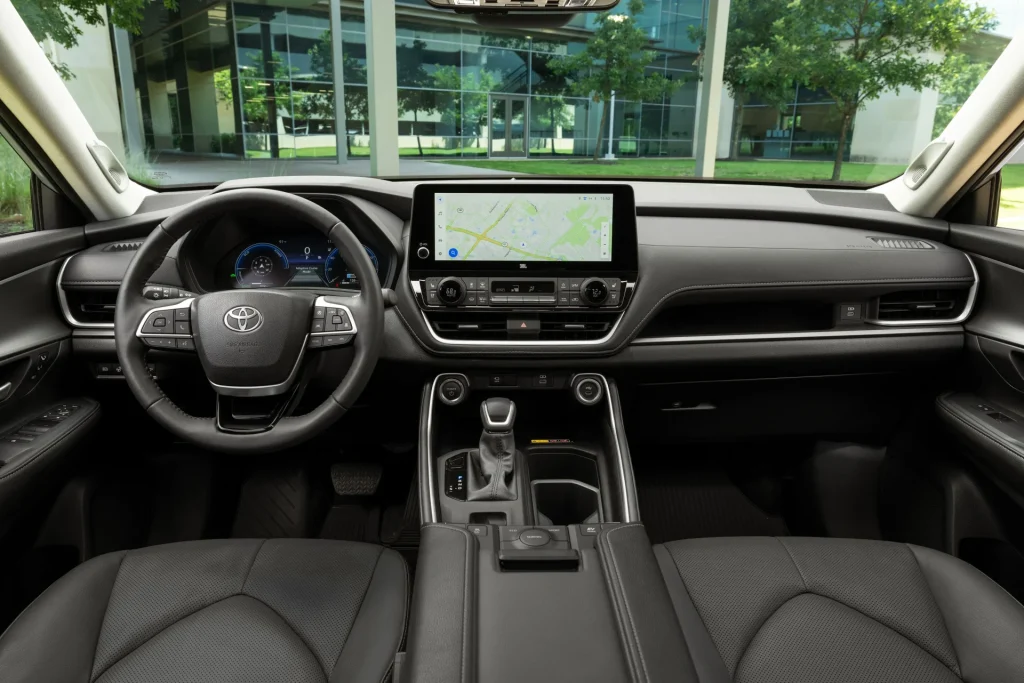
2.4 Turbo Hybrid MAX: “zero compromises.” Accelerates like a midsize sports sedan, maintains 5,000 lbs of towing, and is more efficient than typical aspirated V6 engines. For those wanting everything: space, performance, and technology—prioritized in that order.
Key Numbers You Need to Remember
Dimensions: 201.4 x 78.3 x 70.1 inches; wheelbase 116.1 inches; ground clearance 8.0 inches. Cargo capacity: up to 98 cubic feet max. Power: 245–362 hp depending on powertrain. 0–60 mph: 6.3–8.0 seconds. Towing capacity: 3,500–5,000 lbs. Prices (MSRP): from $42,855 to just over $60,000 depending on version and powertrain.
Quick summary: fits the entire family, vacation luggage, bikes, the dog, and still has energy for a solid overtaking maneuver—especially the Hybrid MAX.
FAQ — Quick Questions Before Deciding
- Is it bigger than the “normal” Highlander? Yes. It’s significantly longer with a longer wheelbase, providing a much larger third row and trunk space.
- Which engine is the most efficient? The 2.5 Hybrid. It’s the best for fuel economy, ideal for city use and families with high mileage.
- Which engine is the fastest? The Hybrid MAX (362 hp). It accelerates from 0-60 mph in 6.3 seconds and can tow 5,000 lbs.
- Is AWD available on all models? Yes, but it varies from optional to standard depending on the version and powertrain. The Hybrid MAX already features full-time electronic AWD.
- Does it have good technology? Yes. A 12.3″ touchscreen on all trims, wireless integration, a full suite of driver assists, and premium extras in higher trims.
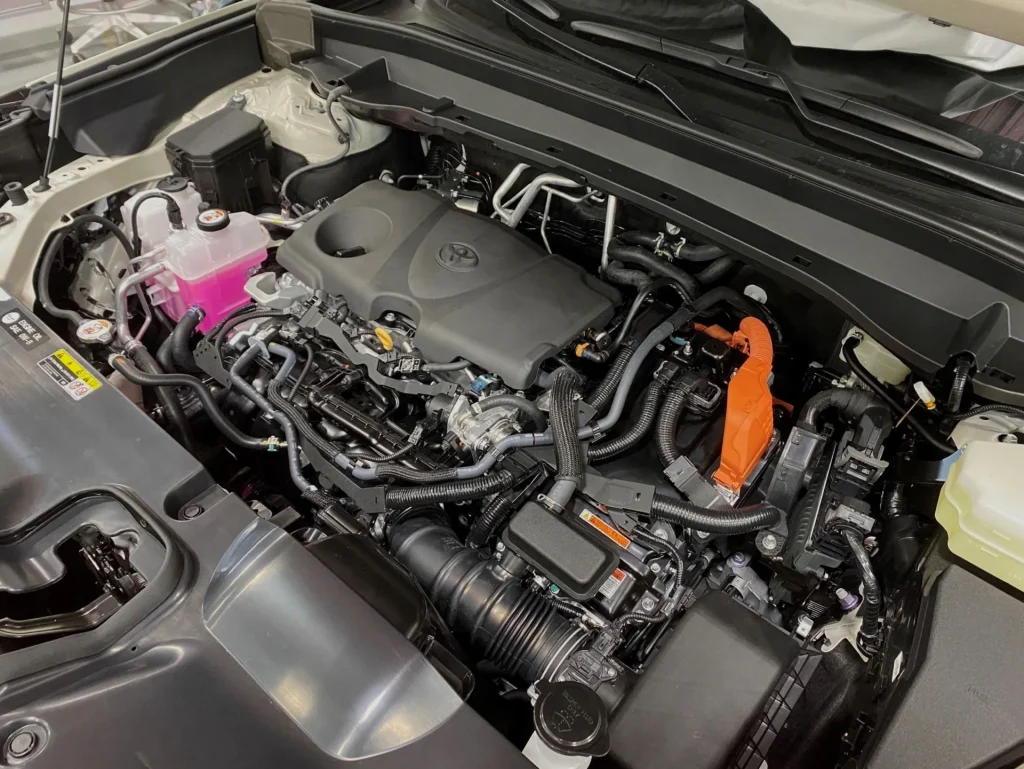
Top Rivals to Keep in Mind (To Avoid Mistakes)
- Palisade: strong luxury perception
- CX-90: driving is the priority
- QX60: premium focus first
- Acadia: well-equipped technology
Verdict: The 2026 Toyota Grand Highlander is the new “practical standard” among three-row SUVs. If spaciousness and powertrain flexibility are your top priorities, it makes more sense than almost all others—and the Hybrid MAX is the trump card that gives you V6-like performance without the fuel costs.
We want to hear your opinion: Which powertrain best matches your daily use and why? Share in the comments and help others decide.
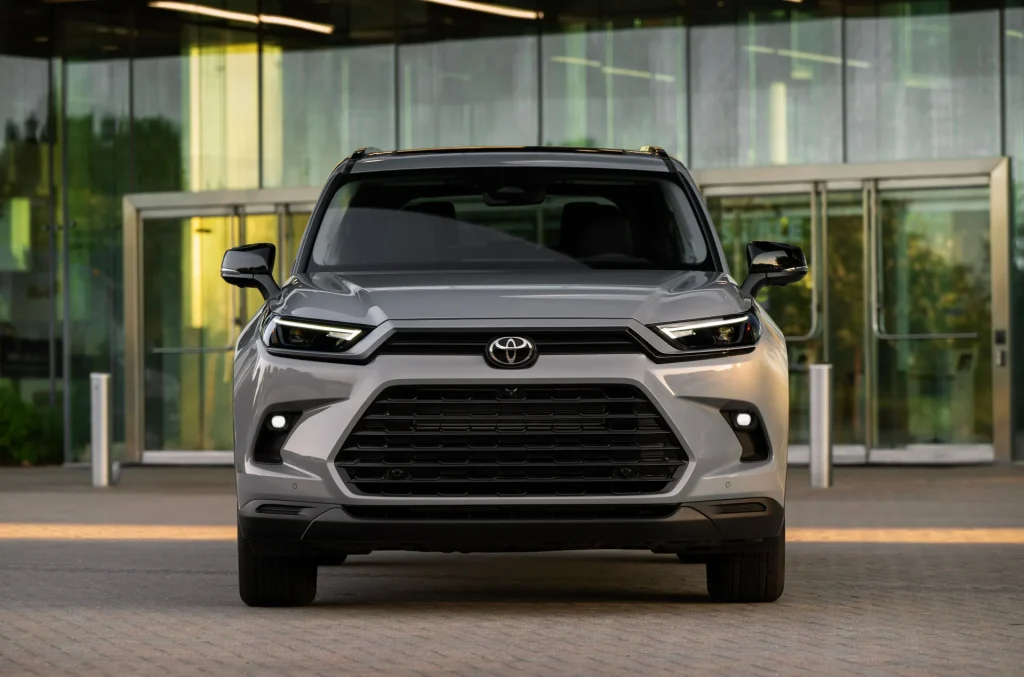
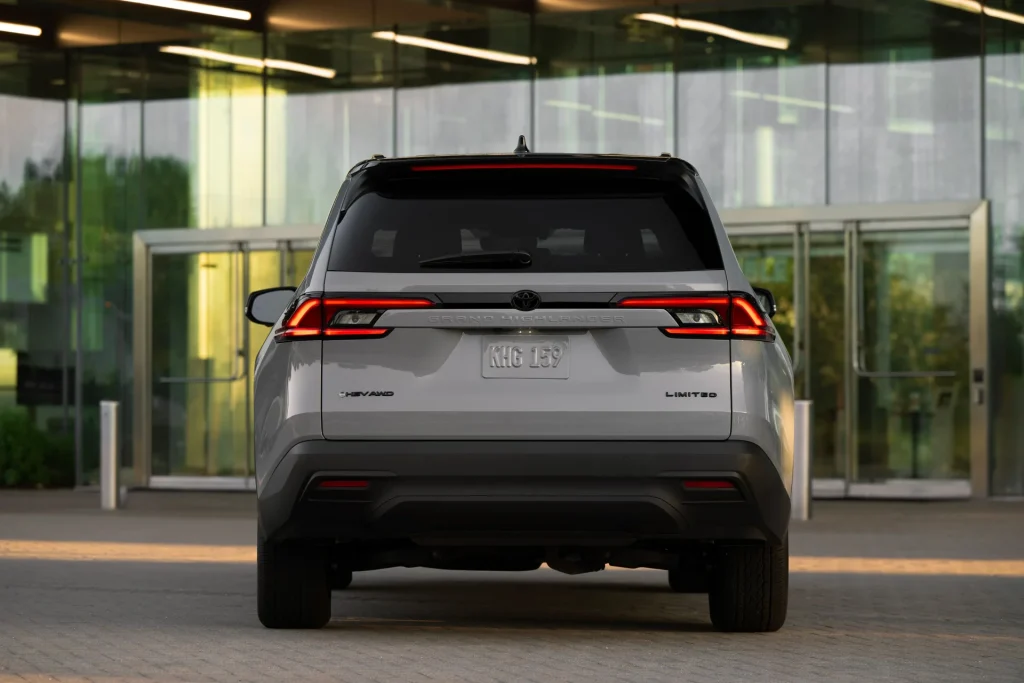
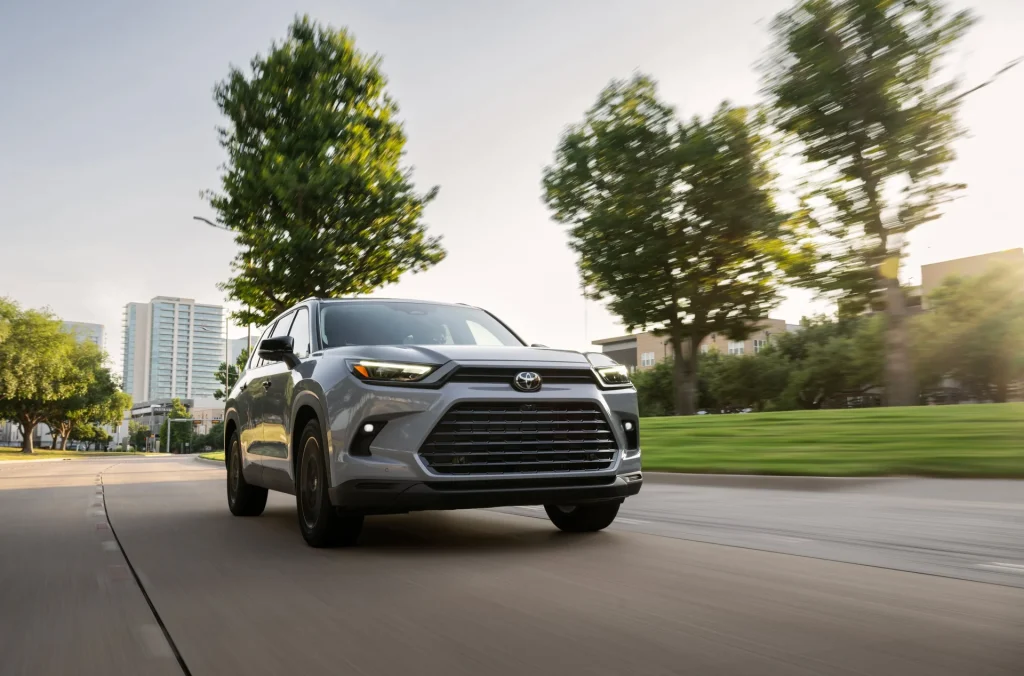


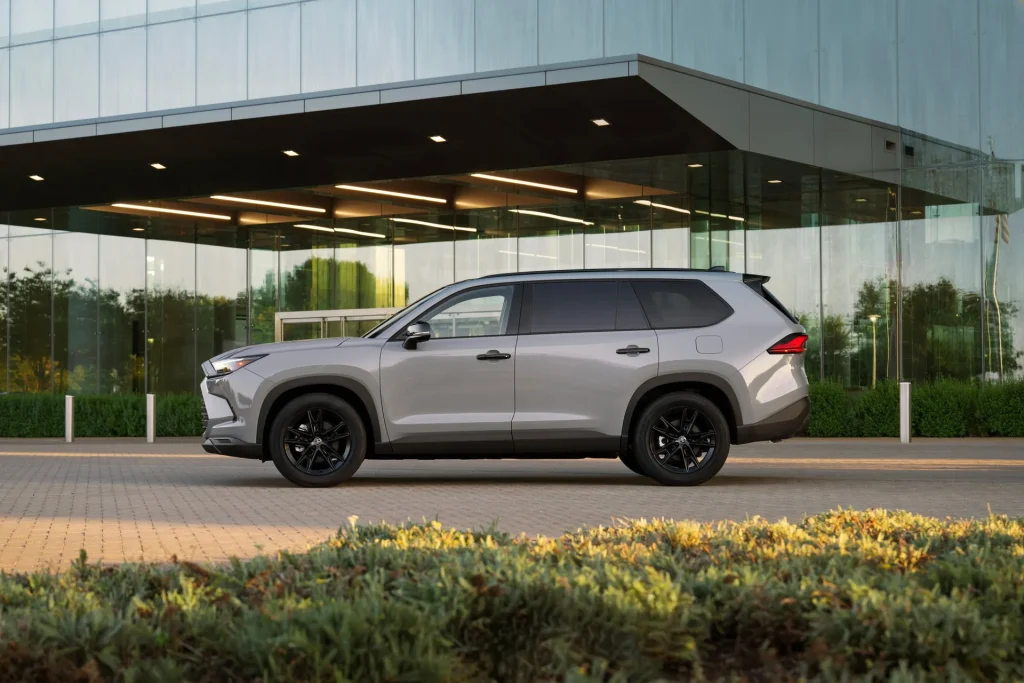
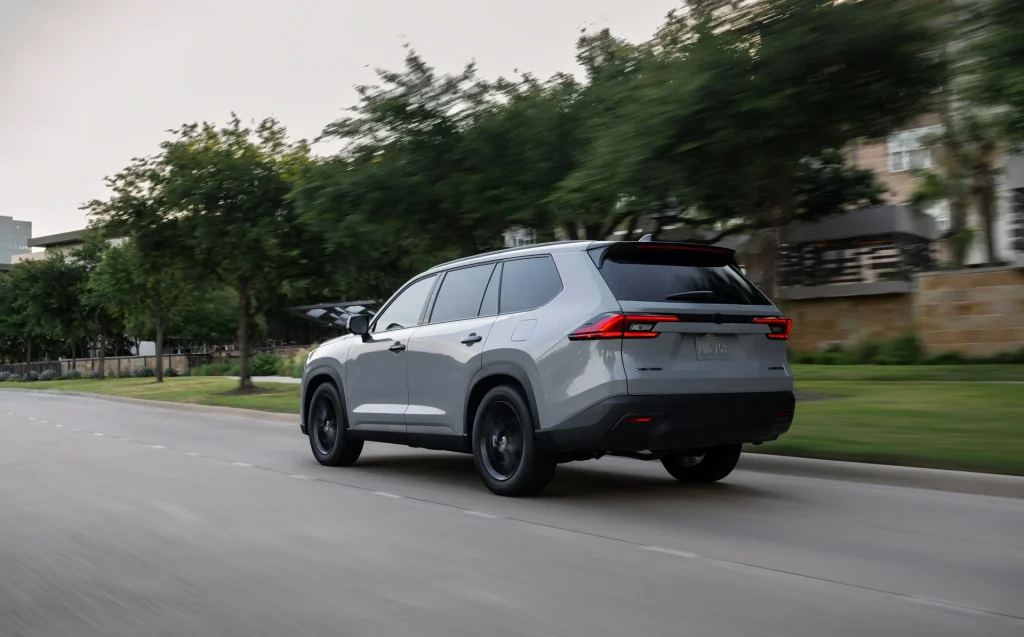

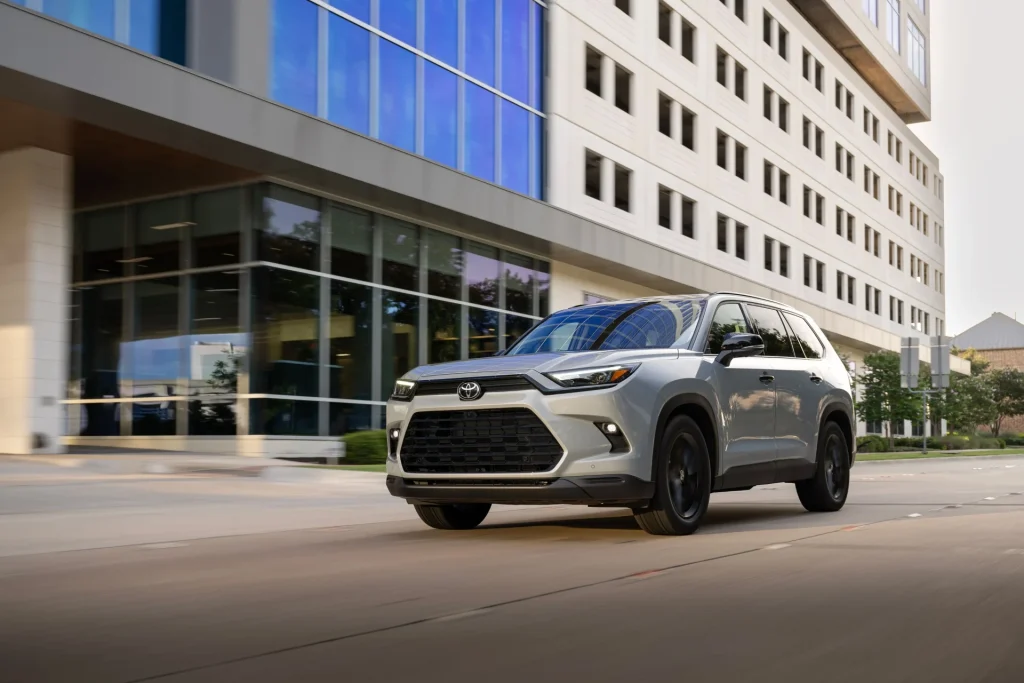
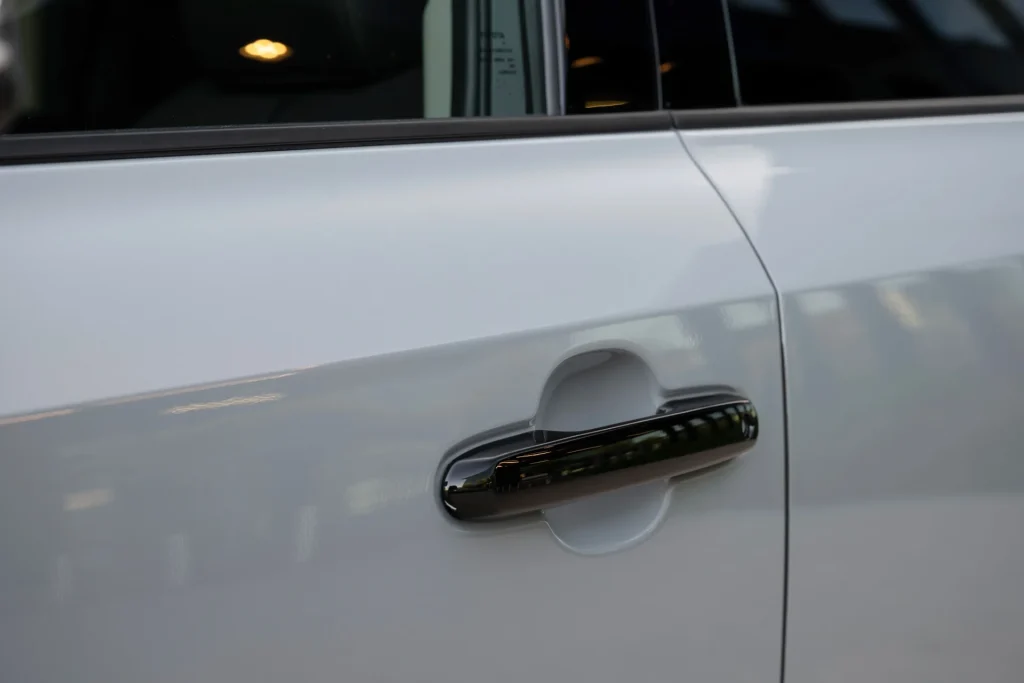
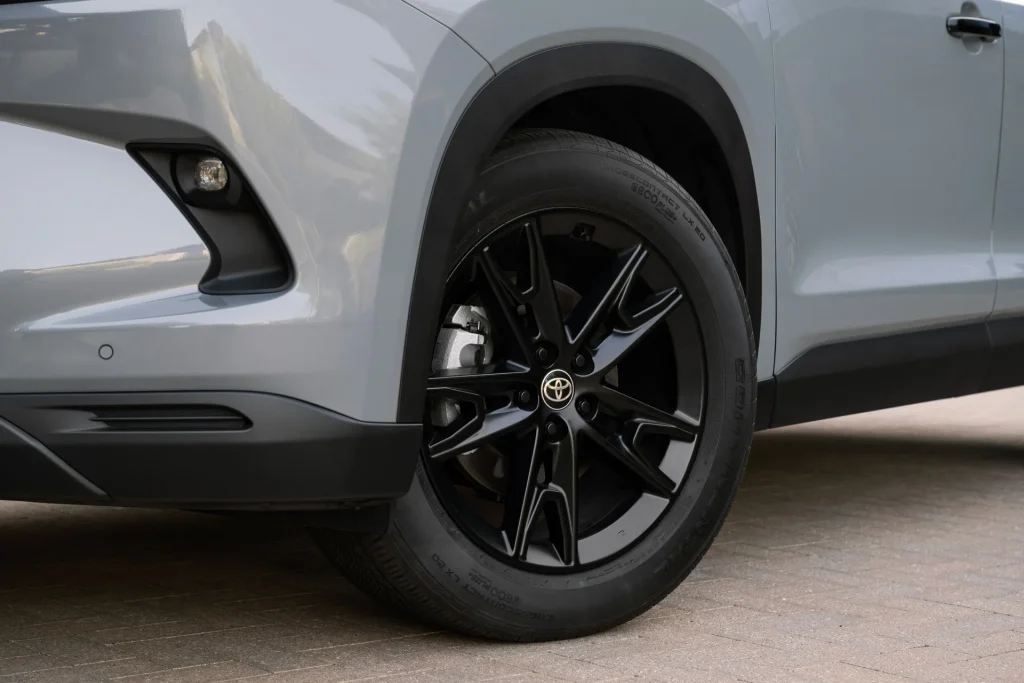

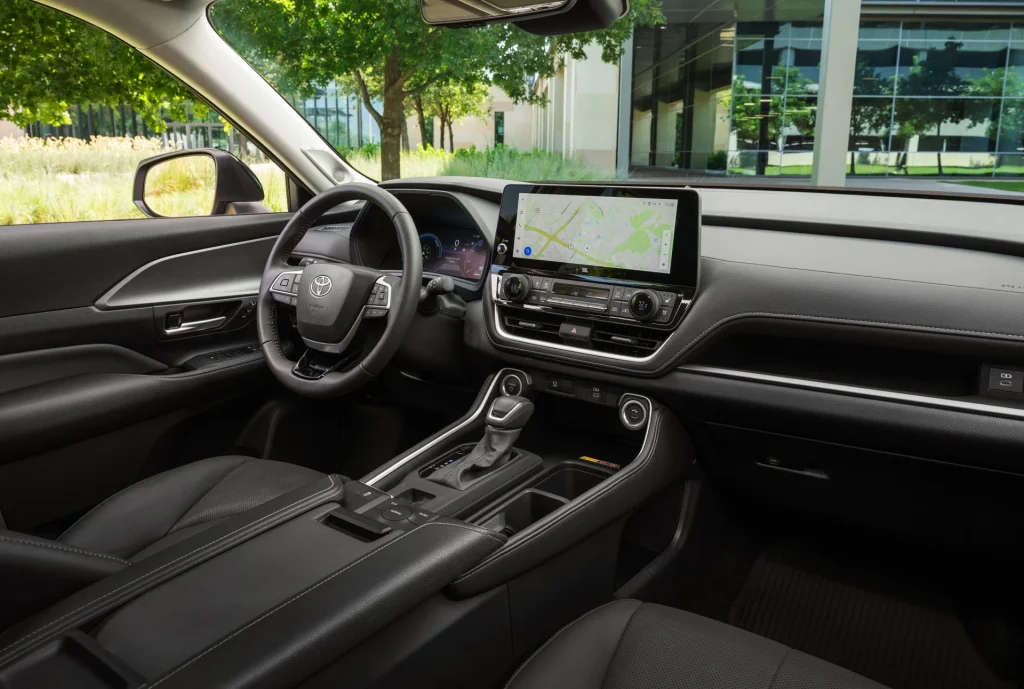


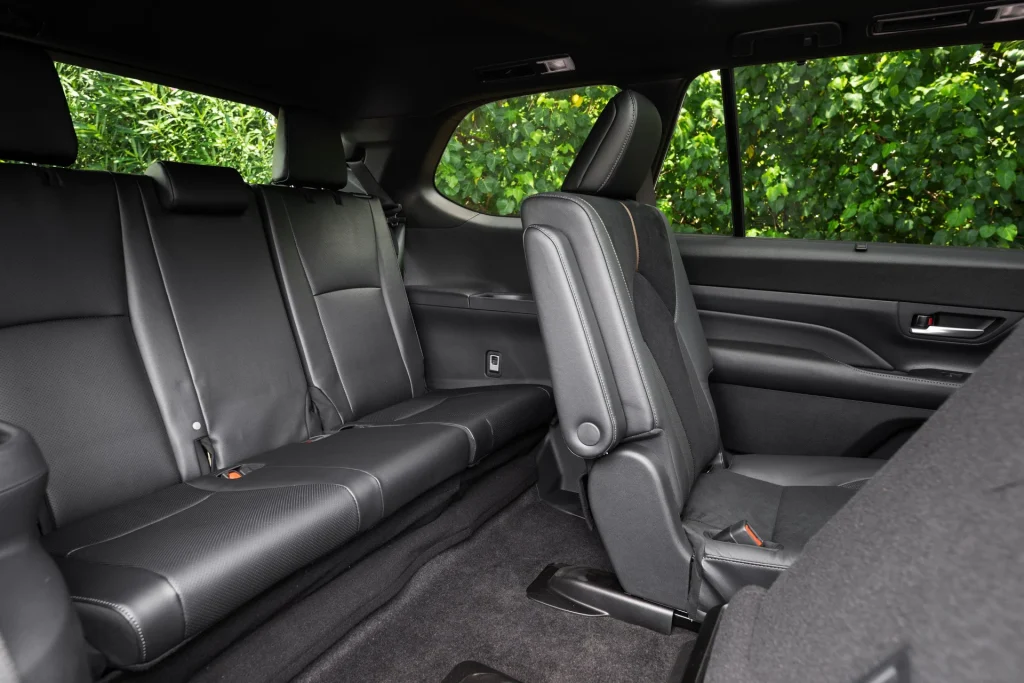
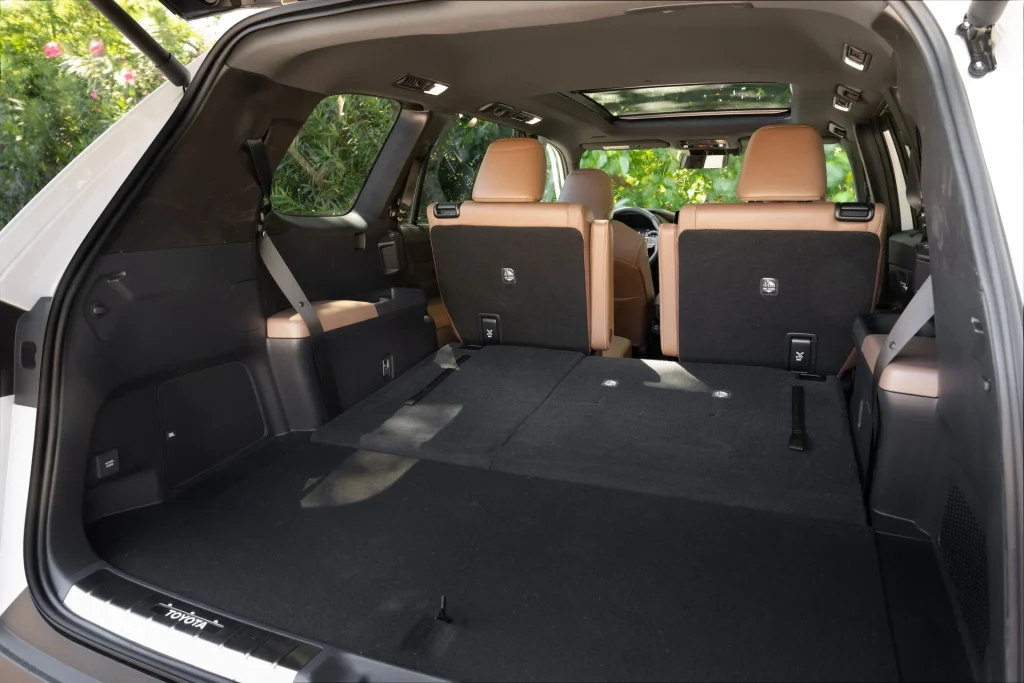
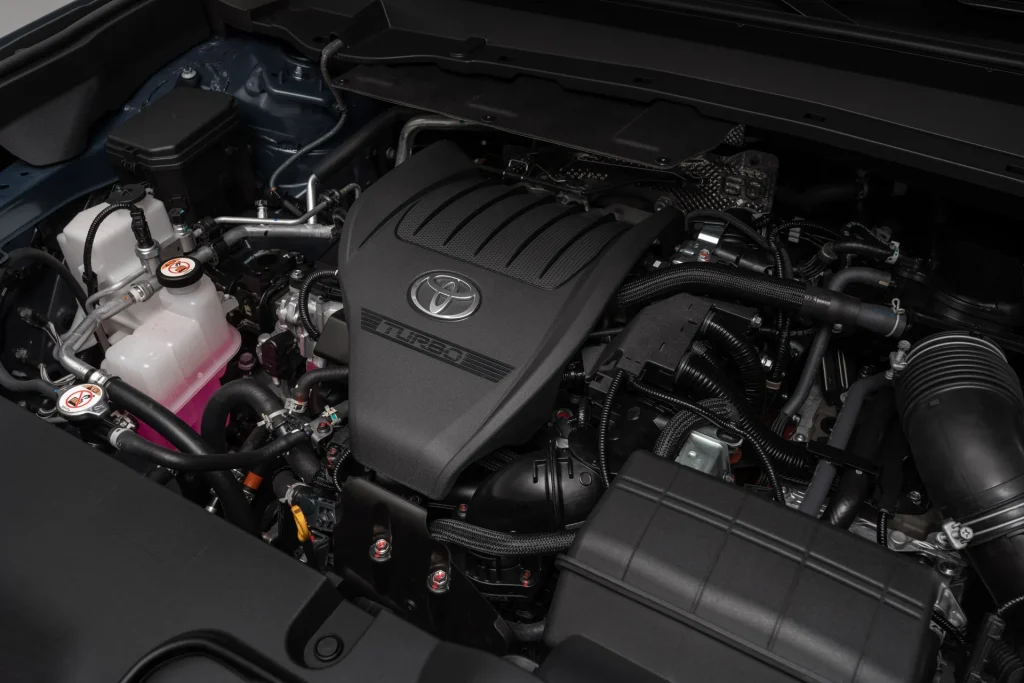


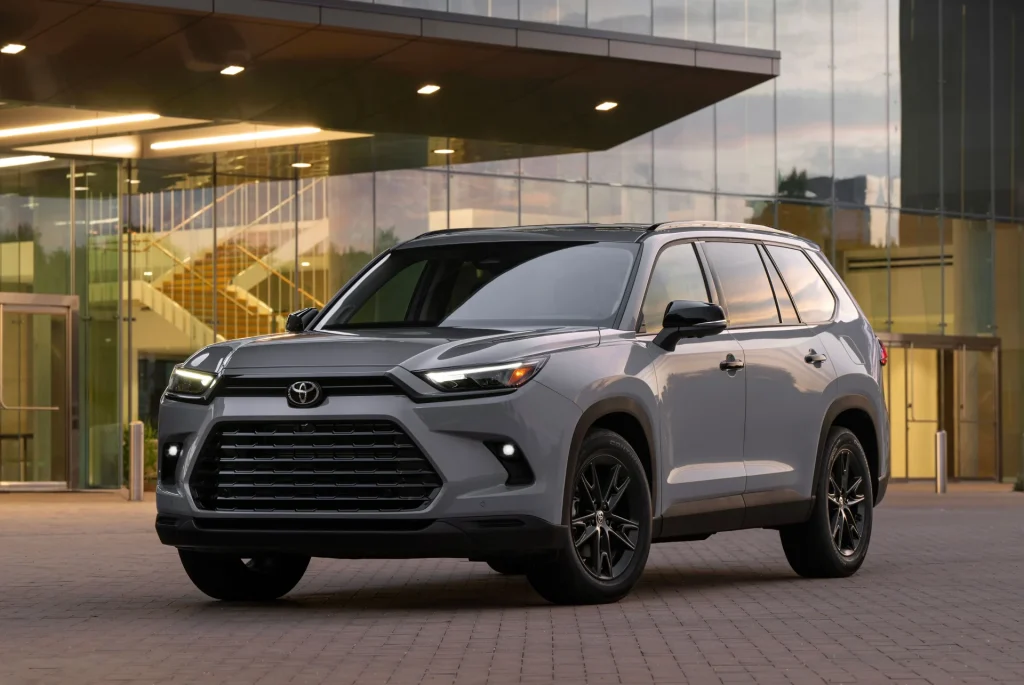
Author: Fabio Isidoro
Founder and editor-in-chief of Canal Carro, he dedicates himself to exploring the automotive universe with depth and passion. A car and technology enthusiast, he produces technical content and in-depth analyses of national and international vehicles, combining quality information with a critical eye for the public.


